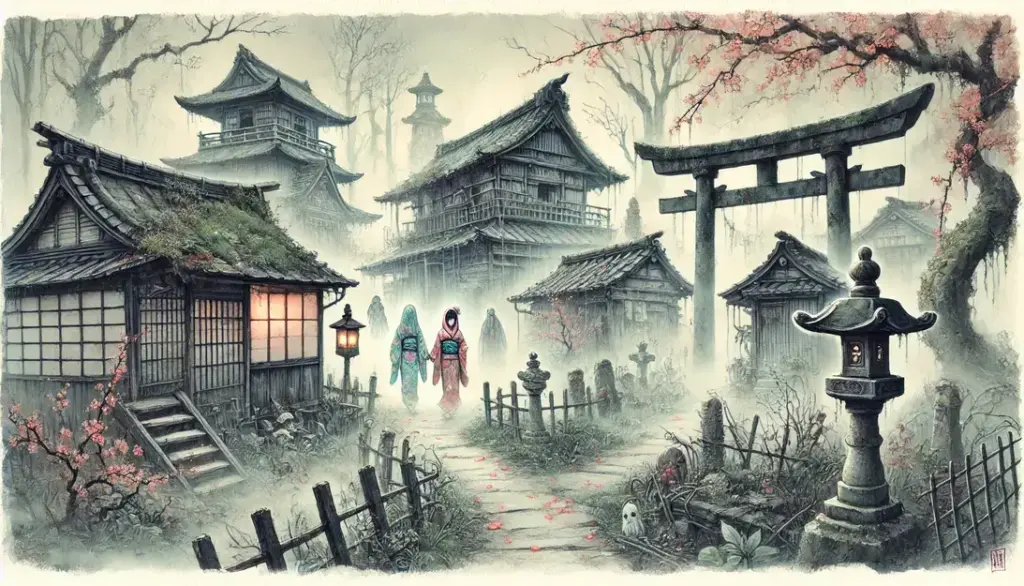Japan’s “witch houses” capture the imagination with their eerie charm and haunting stories. These abandoned homes, often hidden in quiet villages, hold secrets of a rapidly changing society. With over 8 million such houses scattered across the country, they’ve become symbols of Japan’s aging population and rural decline. For travelers and mystery-seekers, exploring these decaying structures is like stepping into a living ghost story. Why are these homes left behind? The answers are as haunting as the houses themselves.
What Are Witch Houses?
Witch Houses in Japan are more than just abandoned properties; they’re symbols of cultural shifts and haunting legacies. As rural areas empty out and traditional ways fade, these homes take on an air of mystery and melancholy. Their eerie character attracts intrigue from curious onlookers and urban explorers alike. But what’s in a name, and what features make these places stand out? Let’s explore.
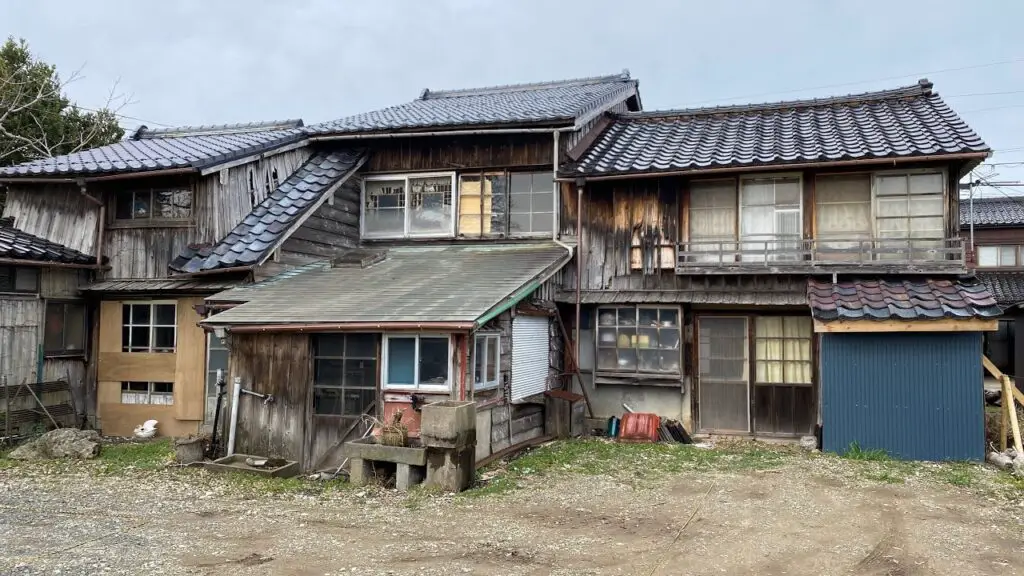
The Meaning Behind the Name
The term “witch houses” might conjure images of cauldrons and spellbooks, but its origins in Japan are more grounded in reality. These homes are often abandoned due to depopulation in rural areas, leaving them to deteriorate and appear otherworldly. The nickname likely comes from their sinister, haunting look—warped wood, shattered windows, and overgrown gardens create an atmosphere reminiscent of a witch’s lair.
In Japanese culture, there’s also a deep-rooted respect for the unseen. Homes left empty for years may carry an aura of unease. The belief in yūrei (ghosts) and lingering spirits gives these places a supernatural vibe, strengthening the eerie association with witches. The term isn’t official, but it’s widely used by locals and visitors captivated by the spooky aesthetic. Interested in the backstory?
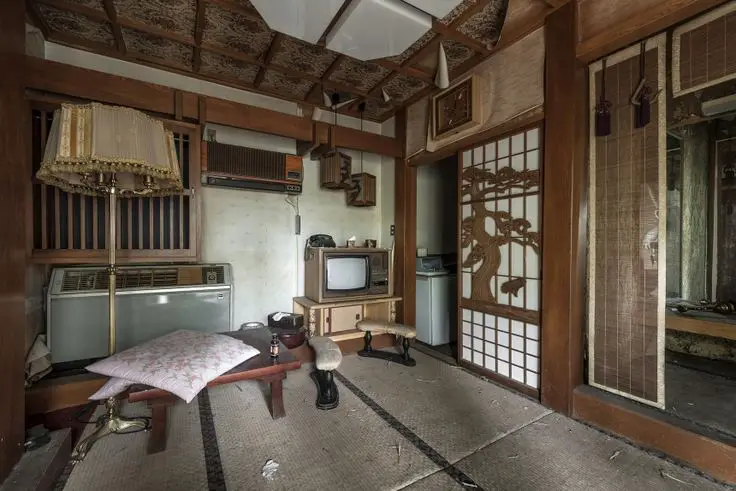
Distinctive Features of Witch Houses
What sets witch houses apart from other abandoned structures? Their unique features include:
- Remote Locations: These homes are often in isolated villages, surrounded by dense forests or tucked away in mountainous regions.
- Decayed Aesthetics: Time has left its mark—rotting wood, sagging roofs, and creeping vines turn these homes into gothic relics.
- Lingering Possessions: Unlike typical abandoned houses, some witch houses still hold items left behind, like furniture or clothing, adding to their ghostly allure.
- Architectural Details: Many stem from older Japanese architectural styles, boasting traditional shoji screens, tatami mats, or even thatched roofs. These elements amplify the sense of stepping into another era.
Their unsettling beauty captures the imagination. Whether it’s the way they blend into nature or their haunted aura, these places are unforgettable.
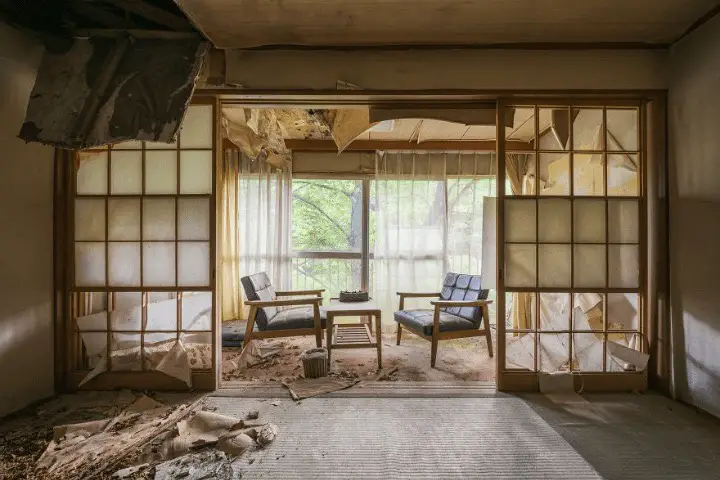
The Rising Phenomenon of Abandoned Homes
The foreboding beauty of abandoned homes in Japan, known as “witch houses,” catches the eye and stirs the soul. These eerie relics are a growing phenomenon, intertwined with societal issues like urbanization and population shifts. From the dwindling countryside to eerie urban corners, these houses speak volumes about Japan’s changing way of life. But what has caused this surge in abandoned homes, and why have they been given this ghostly nickname? Let’s break it down.
Japan’s Akiya Crisis
Japan’s “akiya” (vacant homes) have reached staggering numbers. As of 2023, more than 9 million homes sit empty—a record high. That’s equivalent to 14% of all residential properties, with some areas revealing even higher concentrations. Many of these homes remain unsold or unclaimed, left decaying in rural and suburban areas.
This vast inventory of abandoned properties has given rise to the term “witch houses.” Their haunted, decrepit state—complete with creeping vines, shattered windows, and eerie silence—invites the imagination to run wild. According to CNN, the problem has become so severe that entire rural neighborhoods are dotted with these ghostly remains.
Yet, the climb to 9 million is no accident. It’s the result of deeper issues woven into Japan’s demographic fabric that we’ll explore below.
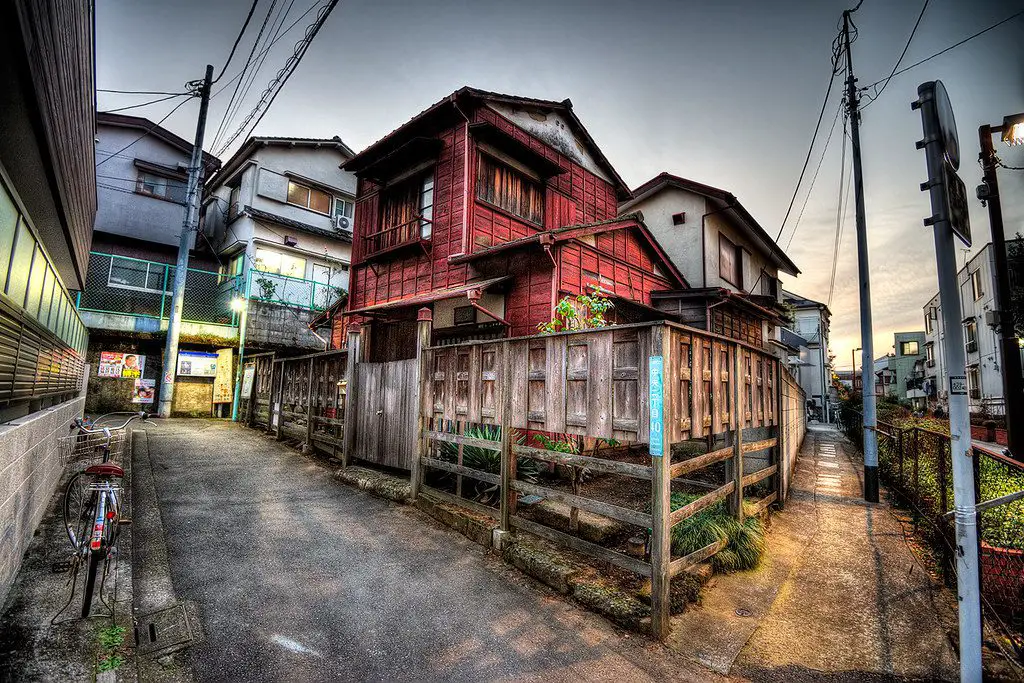
Aging Population and Low Birth Rates
At the heart of Japan’s abandoned homes lies its shrinking and aging population. The country’s birth rate has plummeted to one of the lowest in the world—far below the replacement level needed to sustain its population. At the same time, life expectancy has soared, creating a super-aged society. The unfortunate side effect? More homes are left behind as elderly residents pass away or move into care facilities, with no younger generations to inherit or maintain them.
Imagine a house where generations once gathered for meals, now sitting silent and crumbling. That’s not just a building—it’s a symbol of societal decline. Without new families to breathe life into these spaces, abandonment becomes inevitable. Places like rural Nagano or Yamaguchi Prefectures now resemble time capsules more than thriving communities.
Urbanization and Rural Decline
In post-war Japan, rapid urbanization fueled a mass migration to cities like Tokyo and Osaka. With jobs, education, and technology concentrated in these urban hubs, rural areas began to empty out. What started as a quest for a better life morphed into a wide-scale rural decline.
As fields overgrew and farming villages shrank, homes that once echoed with life became derelict. Urban migration drained the countryside of its youth—taking schools, businesses, and healthcare services with them. This urban-rural divide now defines much of Japan’s landscape, with rural aqueducts leading to deserted properties that become “witch houses” in their eerie solitude.
And it’s not just rural areas. Suburban communities built during Japan’s economic boom are also emptying out, as city centers gobble up populations. For many young people, inheriting a country home means inheriting problems: exorbitant property taxes, renovation costs, and no market for resale.
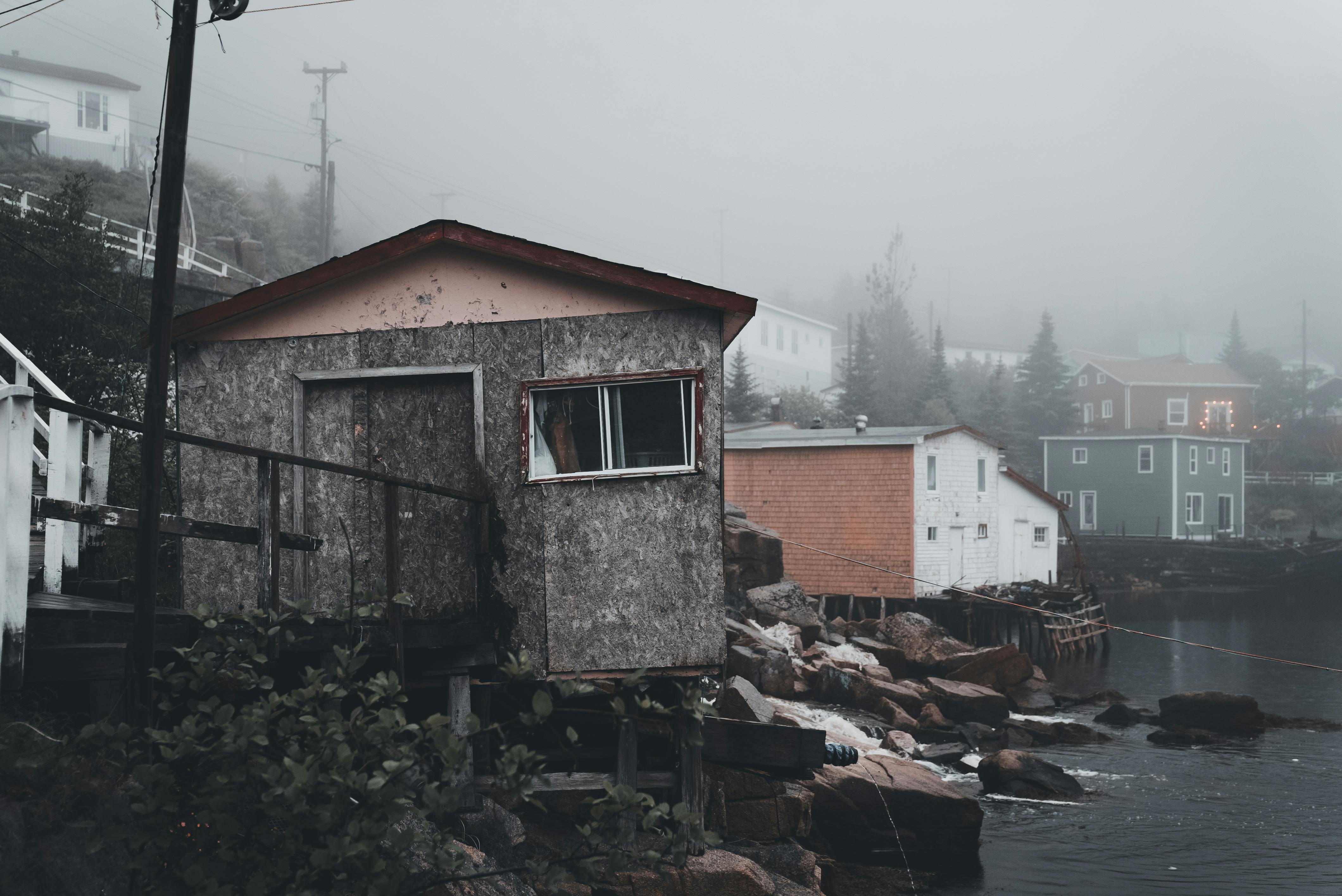
Photo by Erik Mclean
These dynamics are pushing communities toward the brink—and the rise of eerie, abandoned homes is just one of the symptoms. However, the mystery and allure surrounding witch houses continue to fascinate travelers, urban explorers, and even foreign investors seeking a slice of Japan’s haunting beauty.
The Cultural Stigma Surrounding Old Homes
Old homes in Japan, especially those referred to as “witch houses,” are more than forgotten relics. They hold deep cultural significance shaped by spiritual beliefs and traditions. Beyond their abandoned appearance, these homes are surrounded by a unique cultural stigma that impacts their reuse and relevance in modern Japan.
Superstitions and Beliefs
Japanese culture is steeped in traditions and folklore, and these play a pivotal role in how old homes are perceived. Superstitions about spirits, curses, and misfortune are common and deeply ingrained. For instance, an empty home might be seen as a dwelling for spirits or yūrei, lingering souls often linked to unresolved issues or tragic endings. This belief gives these structures an aura of unease.
Specific to rural areas, locals may avoid entering or purchasing such homes for fear of inheriting misfortune. Families often believe that lingering spirits could bring bad luck to new occupants. Some even perform purification rituals before setting foot inside. Interestingly, superstitions like “Don’t sleep facing North” and the unlucky nature of certain objects tie into broader Japanese spiritual customs. Learn more about Japanese superstitions here.
These beliefs extend to property transactions. A home where a death occurred—especially under tragic or violent circumstances—may be considered “stigmatized property,” or jiko bukken. The fear isn’t just about ghosts; it’s a fear of inheriting remnants of the past that cannot be cleansed.
The Notion of Ritual Purity
In traditional Japanese thought, the concept of kegare—impurity—is vital for understanding the stigma connected to old homes. Rooted in Shintoism, kegare refers to spiritual pollution caused by death, illness, or unclean events. Homes that have witnessed death, particularly unnatural ones, are seen as carriers of this impurity. For many, such spaces are simply unredeemable.
This concern goes beyond superstition; it shapes how communities interact with these homes. For example:
- Abandoned Homes Near Cemeteries: Houses located near burial sites might be avoided for their association with death.
- Tragic Histories: Families are often hesitant to live in homes tied to disasters or unfortunate events.
- Mythical ‘Marks’: Some believe the past misfortunes of an owner leave invisible “marks” on the home, tainting its aura.
Shinto rituals, like purification ceremonies or offerings, are sometimes performed to cleanse a property. However, the cost and perceived inefficacy of these rituals often result in homes being ignored instead of reclaimed. Read more about kegare here.
The perception of impurity doesn’t fade easily. It defines how modern Japan views its aging architectural landscape, especially in rural areas. For many, leaving such homes to nature feels more respectful than attempting to reoccupy them.
This cultural mindset contributes significantly to the abandoned state of “witch houses,” leaving them as untouched relics that preserve Japan’s spiritual heritage, albeit in haunting ways.
For a glimpse into similar old Japanese homes, this image captures the aura of timeworn settings: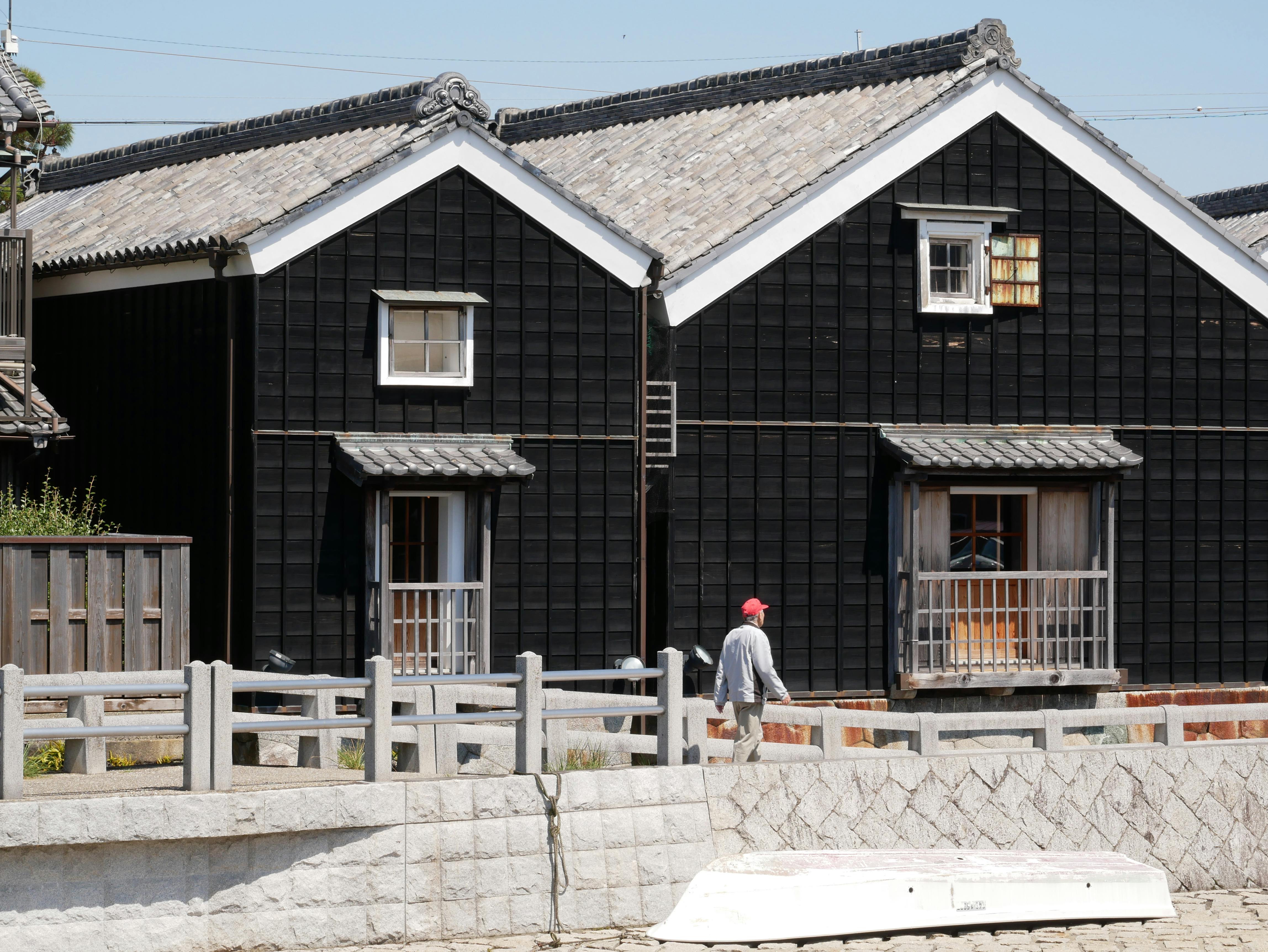
Photo by Vivien
Famous Witch Houses in Japan
The haunting allure of Japan’s witch houses goes beyond their eerie appearances. These homes, infused with unsettling backstories and cultural resonance, often serve as eerie remnants of the country’s evolving history. From abandoned shrines to fictional legends, these so-called “witch houses” are steeped in mystery and curiosity. Let’s explore a few famous examples that encapsulate their haunting charm.
House of the Old Shrine
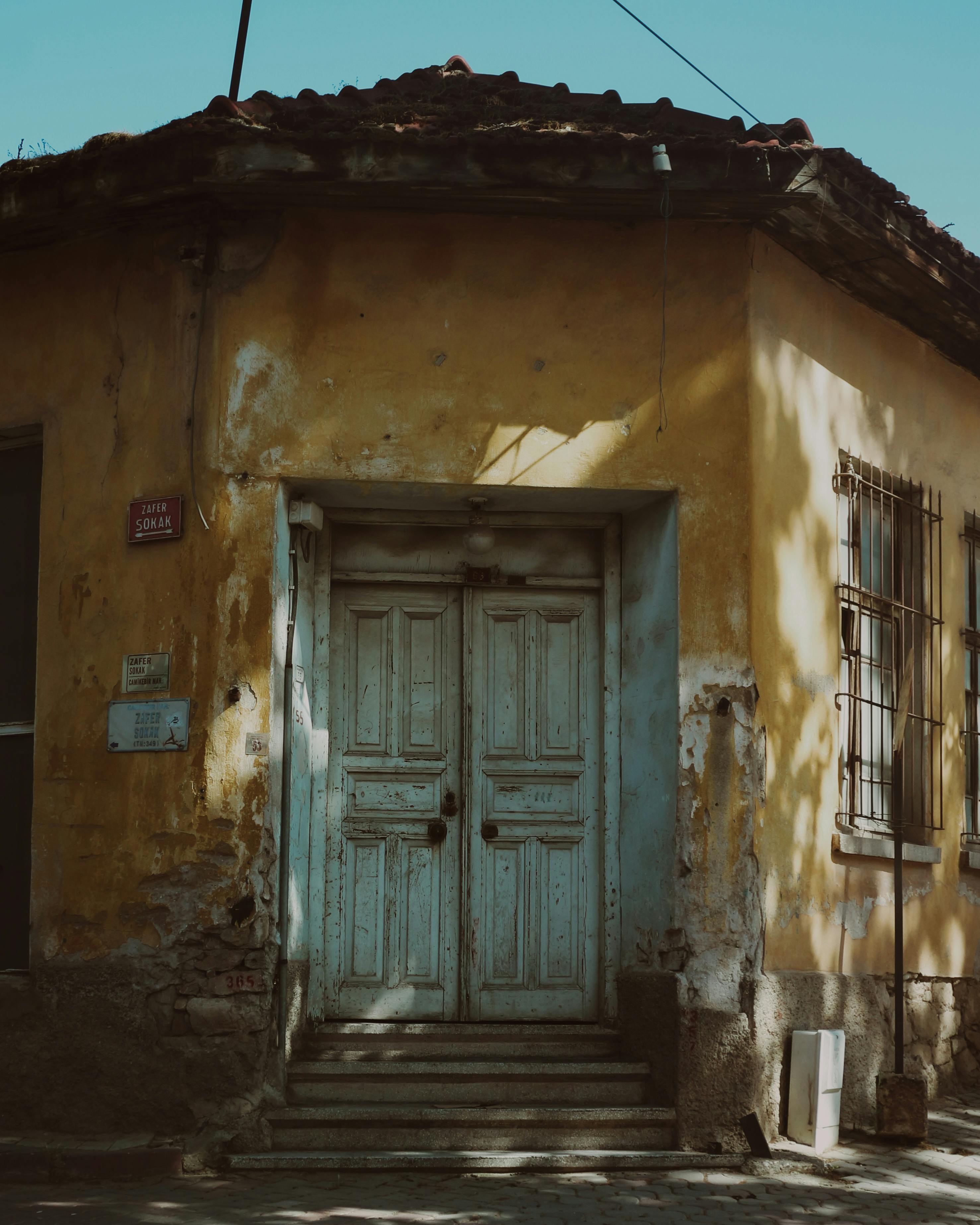
Photo by Eran Topcu
Tucked away in the shadowy outskirts of a forgotten village near a dilapidated Shinto shrine lies the “House of the Old Shrine.” This once grand wooden home now stands as a crumbling monument to time. Its story intertwines with rumors of otherworldly events, making it a prime source of fascination and speculation.
Legends tell of an old priestess who once lived there, said to have protected the surrounding shrine from malevolent spirits. After her disappearance, locals began noticing odd occurrences. Flickering lights at night and whispers carried on the wind brought gossip of hauntings. Some visitors reported a heavy, oppressive feeling upon entering the premises—as if unseen forces weighed down their every step.
This house stands as a chilling reminder of how traditional beliefs intertwine with the supernatural. Curious visitors continue to explore its grounds, marveling at the intersection of decrepit architecture and mysticism. For more insights into similar eerie stories connected to Japan’s abandoned homes, learn about their haunting phenomenon here.
The Saeki House Legend
If you’ve watched Ju-On: The Grudge, the Saeki House is likely to send shivers down your spine. Although fictional, this house is one of the most iconic haunted properties associated with Japan’s ghostly lore. Depicted as an ordinary suburban home in Tokyo, it hides a dark, bone-chilling legacy of tragedy and violent hauntings.
In the film, horrific events unfold after a gruesome murder occurs within the house, allowing vengeful spirits to claim it as their domain. Every new inhabitant falls victim to the unrelenting curse, strengthening the home’s eerie reputation. And while the house itself is an invention of the creative mind of director Takashi Shimizu, it draws inspiration from Japan’s historical belief in onryō, or vengeful spirits, deeply embedded in folklore.
Interestingly, some fans have speculated about real-life locations that could have influenced the film’s setting, though no definitive evidence confirms this. Learn more about the terrifying backstory of the Saeki House and its lasting cultural impact here.
Community Reactions
How do locals view these ghostly structures? Opinions are as mixed as they are fascinating. For some, these homes are nothing more than relics of a bygone era. For others, they hold an unnerving significance. Let’s take a look at varied local perspectives:
- Cultural Superstitions: In Japanese traditions, abandoned homes, especially those near shrines or with dark histories, are believed to carry spiritual remnants. This makes them unappealing for resale or reoccupation.
- Economic Realities: In rural areas, vacant homes are often seen as burdensome. High renovation costs, coupled with limited market demand, leave properties to decay.
- Tourist Fascination: While some residents shy away from these locations, urban explorers and foreign visitors often find beauty in their decay. The eerie charm of witch houses has turned them into niche travel destinations.
Despite their ghostly reputations, witch houses are symbolic of Japan’s evolving demographics and urban migration. Villagers often warn outsiders of potential curses or spiritual consequences tied to these homes, yet it hasn’t stopped small crowds from peeking through worn-out doorways.
In close-knit communities, these abandoned houses remain reminders of roots, hauntings, and stories long forgotten but never entirely erased. For those housing deep superstitions, these “witch houses” are much more than wood and plaster. They are symbols of what’s left unsaid.
Government and Local Efforts to Reclaim Witch Houses
The Japanese government and local municipalities are well aware of the challenges posed by abandoned homes, or “akiya.” These eerie, empty structures, often dubbed “witch houses,” reflect deeper societal issues but also present opportunities for innovative solutions. Here’s how Japan is tackling this problem, and the hurdles they face.
Akiya Bank Program
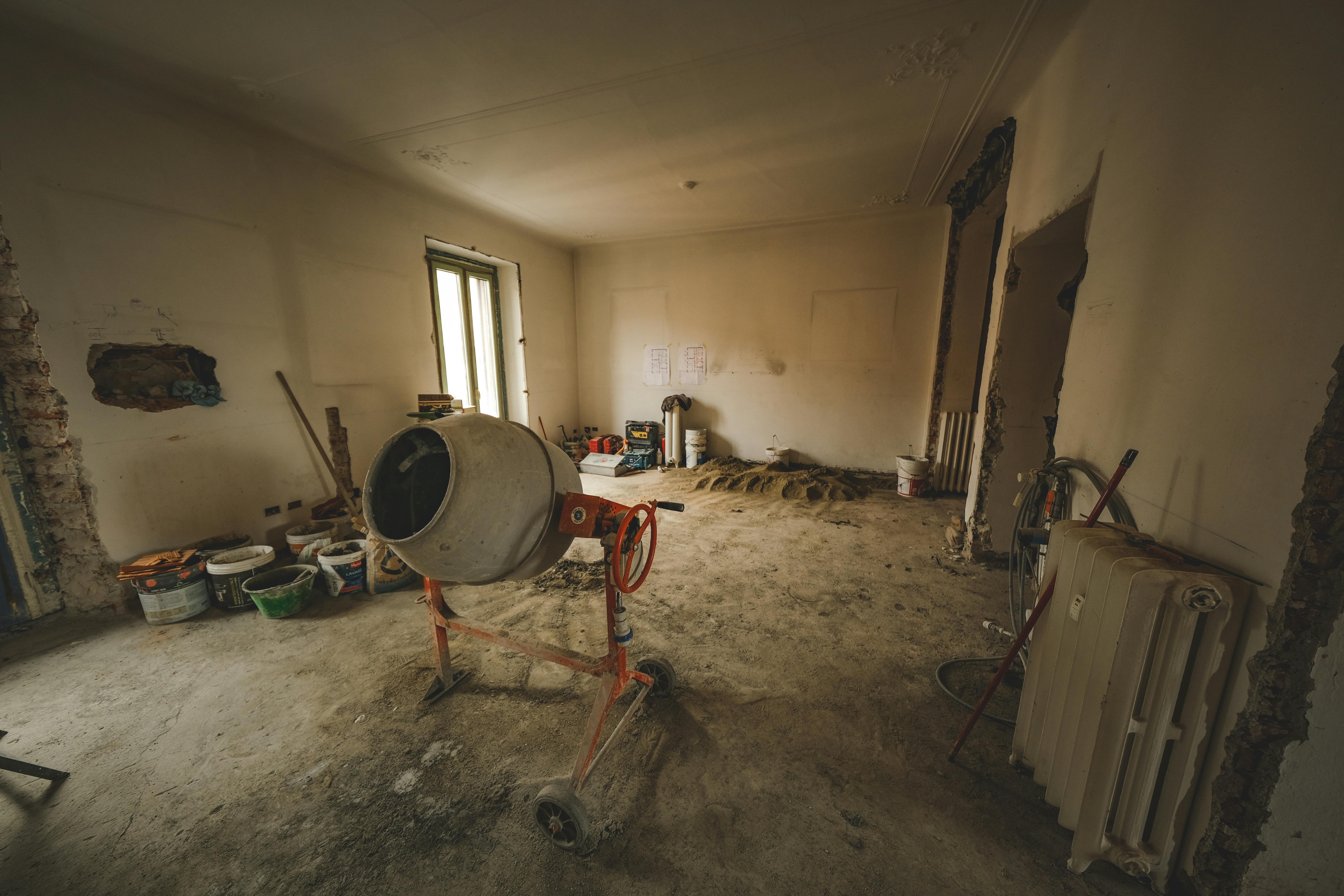
Photo by Francesco Ungaro
To combat the rising number of abandoned homes, Japan introduced the Akiya Bank Program to breathe new life into these forgotten structures. The program acts as an online marketplace, where local governments and private sellers list vacant homes at enticingly low costs—or even for free in some cases. The goal? To encourage people, especially younger generations, to reclaim and rejuvenate these properties.
Through Akiya Banks, potential buyers can search properties by location and condition. Many of these homes are located in rural areas, where depopulation has left entire neighborhoods ghostly quiet. The houses might require some serious repair work, but their affordability makes them an attractive option for adventurous renovators or budget-conscious families. Here are key points that make Akiya Banks unique:
- Low-Cost Listings: Some properties are listed for as little as ¥1—the equivalent of a few cents.
- Tax Incentives: Buyers may qualify for tax breaks on renovations to encourage property upgrades.
- Community Revitalization: Local governments sometimes offer additional support, like subsidies or guidance, to help newcomers settle in.
Despite these perks, it’s not all smooth sailing. Homes listed in the marketplace often require significant renovations due to years of neglect. Plus, moving to rural Japan comes with lifestyle adjustments, as urban amenities may be out of reach. Explore more about the Akiya Bank system and how it operates here: AkiyaBanks | Japanese House Banks.
Challenges in Demolishing or Reusing Properties
While the Akiya Bank Program offers solutions, some abandoned homes remain untouched, creating eyesores and potential hazards. Why? It’s not just about finding a buyer—it’s about navigating Japan’s complex web of regulations and cultural values.
- Bureaucratic Hurdles: Demolishing homes in Japan isn’t as simple as knocking down walls. For example, strict zoning laws and outdated property deeds often complicate demolition efforts. Many properties do not have clear ownership due to inheritance disputes or incomplete documentation, making legal resolutions a nightmare.
- Demolition Costs: Tearing down a home can cost upwards of ¥2 million ($13,500 USD). For many property owners, especially in rural areas, these costs outweigh the perceived benefits, leaving the house to rot instead.
- Cultural Sentiment: In Japan, land tied to family lineage carries deep cultural significance. Relatives may hesitate to demolish a property even if it’s unlivable, fearing it disrespects their ancestors. This cultural hesitation often leaves properties stuck in limbo.
- Safety Risks: Aging and poorly maintained structures pose dangers to neighboring communities: collapsing under heavy snow or typhoon winds, for instance. Without proactive measures, these homes can quickly go from charmingly eerie to outright hazardous.
Efforts to address these challenges are ongoing, but they require a delicate balance between modern practicality and respecting local traditions. Demolition in particular often sparks intense debate, as it not only erases a physical structure but also a piece of family and regional history. Find more about the complexities surrounding vacant properties here: Turning Japan’s Surging Empty Homes into Community Assets.
While witch houses remain eerie symbols of Japan’s shifting society, the government’s focus on revitalizing these properties demonstrates a commitment to problem-solving. Whether through Akiya Banks or navigating legal obstacles, Japan’s efforts highlight the complexity—and potential—of bringing these haunted homes back to life.
Why People are Fascinated by Witch Houses
The fascination with Japan’s witch houses isn’t just about their eerie appearance. These abandoned homes embody mystery, folklore, and a touch of the supernatural. They’re places where people project their fears, imaginations, and curiosity. But what drives this collective interest in such places? Let’s break it down.
The Allure of Mystery and Eeriness
Witch houses instantly grab attention with their dilapidated charm and bone-chilling aura. For locals and visitors alike, they evoke a sense of wonder. Why were these places left untouched? Who lived here, and why does the air feel heavy with secrets? These unanswered questions are part of the draw.
These houses stand as echoes of forgotten lives. The sight of sagging roofs, overgrown ivy, and scattered artifacts feels like stepping into a real-life ghost story. It’s human nature to be fascinated by what we don’t fully understand. There’s also a psychological element to it—curiosity often overpowers fear, drawing us closer to the forbidden.
Beyond the mystery, the houses appeal because of their stunning, gothic aesthetics. The haunting beauty in their decay creates a surreal atmosphere. Their isolation, tucked away in small rural areas or dense forests, invites an almost meditative sense of discovery for those who seek them.
Explore why people are drawn to eerie and unexplained phenomena here.
Role in Pop Culture
The allure of witch houses reaches far beyond Japan’s borders, finding a solid foundation in pop culture. From gothic tales to Japanese cinema, these abandoned homes have inspired countless stories that blend horror, fantasy, and suspense.
A prime example is the fictional depiction of these eerie homes in films like Ju-On: The Grudge. This horror franchise centers on cursed homes harboring vengeful spirits, directly inspired by Japan’s superstitions surrounding abandoned properties. Similarly, Studio Ghibli’s animation Spirited Away explores themes of abandonment and the lingering energy of the past, echoing the essence of witch houses.
Globally, movies like Hocus Pocus and The Witches romanticize the idea of haunted or magical homes. Their widespread popularity highlights a universal fascination with mysterious dwellings. These films and stories contribute to the mystique of witch houses as places where imagination and reality blur.
On social media, haunted locations frequently trend, fueled by dramatic imagery and chilling backstories. The cultural obsession with exploring the unknown keeps witch houses firmly rooted in the public consciousness. You can explore pop culture’s take on witchy homes here.
Tourism and Exploration
For adventurous travelers, witch houses in Japan offer a unique and offbeat experience. These mysterious structures are hotspots for urban explorers, photographers, and paranormal enthusiasts. Visiting one feels like entering another dimension—a forgotten world where time stands still.
Some enthusiasts plan entire itineraries around finding and documenting these houses, drawn by their historical and architectural significance. Many witch houses are remnants of the Showa Era, featuring wooden frameworks and tatami mats that amplify their otherworldly appeal.
While tourism around witch houses is largely informal, a few notable sites have gained recognition. Salem’s Witch House in the U.S. is a benchmark of how these eerie attractions can shape local tourism. Similarly, Japan sees an increasing number of photographers and vloggers uncovering hidden treasures in the countryside.
Tour guides often weave folktales into their explorations, adding depth to the visitor experience. In a way, these abandoned homes serve as cultural landmarks, encapsulating stories of decline, migration, and societal evolution. Planning your next haunting getaway? Learn how tourism uses these homes as significant attractions here.
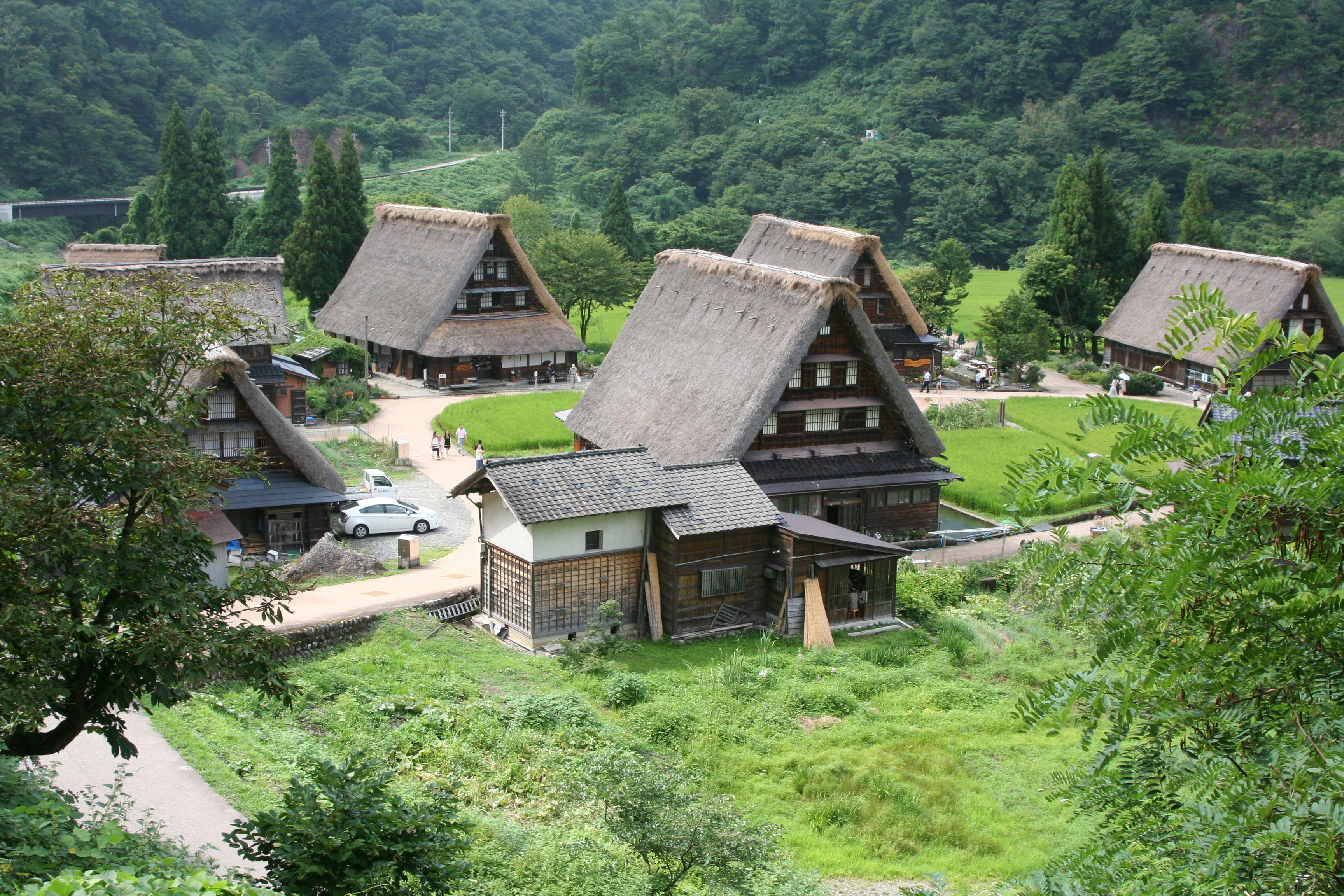
Photo by KENJI IWASAKI
Conclusion
Witch houses in Japan stand as eerie windows into a changing culture, blending mystery, history, and societal challenges. These abandoned homes aren’t just spooky—they symbolize the effects of urban migration, population decline, and cultural traditions that hold deep-rooted beliefs in spirits and purity.
Their haunting beauty and unresolved stories continue to captivate explorers, storytellers, and tourists alike. Whether you’re drawn by curiosity or the architectural remnants of another era, these structures leave a lasting impression.
Have you ever seen a “witch house” up close? Share your thoughts or travel experiences in the comments below!

